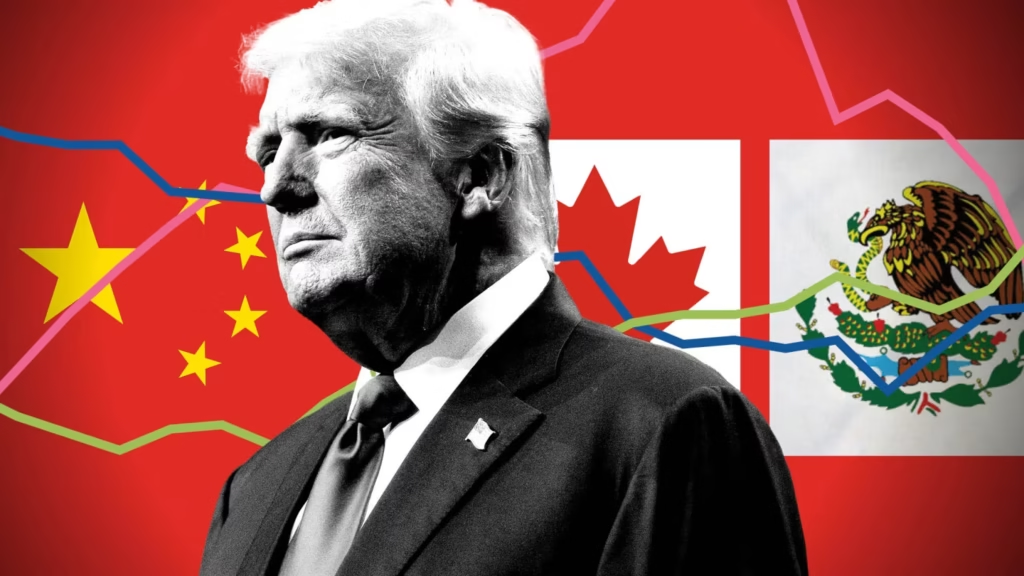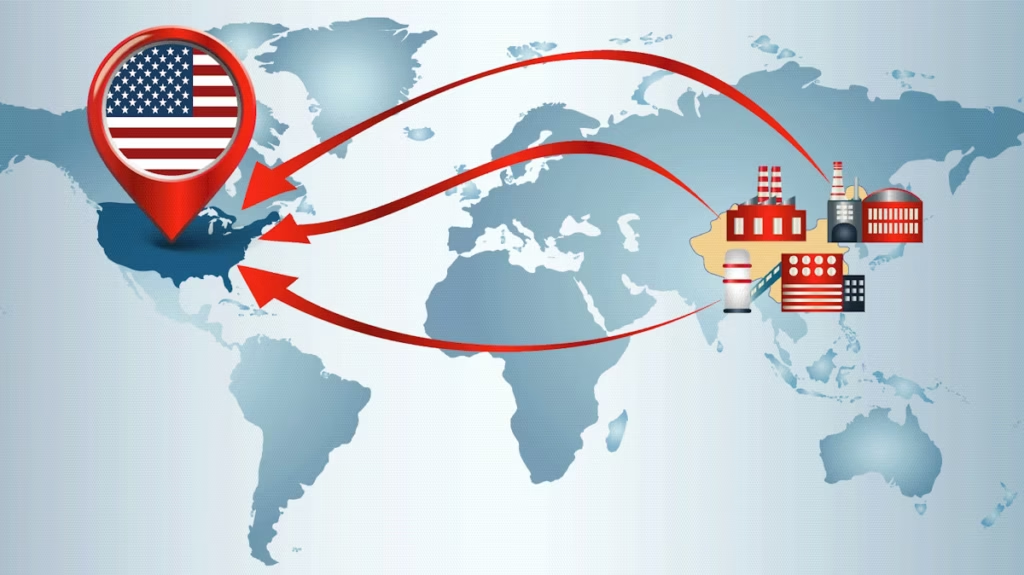Why Trump Start a Trade War?
(Feat. Cars, Mexico, Canada, US Civil War, Reshoring, Donald Trump, JD Vance, Election, Republicans, Democratic, immigration, KKK, Slavery, Hillbilly Elegy, Rust Belt, Welfare, automobile, electric car)
Ready for Round 2? Trump’s Trade War Gets a Fresh Spin!
The tariff talk is back, and this time, it’s bigger than ever. With whispers of a 25% blanket tariff on foreign cars and reshoring efforts ramping up, Trump’s potential second-term strategy is all about making “Made in America” a global force. Steel prices, NAFTA revisions, and manufacturing giants are in the spotlight again.
Curious about how it all connects to the rise of Hillbilly Elegy voters and reshoring? Let’s dive into the backstory behind Trump’s bold moves and what it could mean for the future of American jobs and global trade. Buckle up—it’s a wild ride!

1. April 12, 1861 – The U.S. Civil War began.
2. The U.S. Civil War is also called the North-South War.

3. The causes of the Civil War can be interpreted in various ways, but it can also be seen as a power struggle between the North and South.
4. In 1808, when the import of slaves was banned, slave prices surged from $50 to $800.
5. As slave prices soared, the value of slaves in the southern U.S. reached $2 billion, accounting for 20% of the total wealth in the region.
6. Policies to emancipate slaves essentially meant wiping out 20% of the South’s total assets.
7. This also created issues for elections between the Republican Party (based in the North) and the Democratic Party (based in the South).
8. Before the Civil War, each slave was counted as 0.2 of a vote.
9. Emancipating slaves would allow them to vote as full citizens, with one vote each.
10. Freed slaves were likely to support the Republican Party that abolished slavery, giving the party dominance not just in the North but possibly in the South too.

11. Losing both wealth and political representation made it extremely difficult for the South to accept emancipation.
12. Eventually, the South declared independence and started the war.
13. Although the South started the war, the North held overwhelming strategic advantages.
14. The North’s population was four times larger than the South’s.
15. The North also dominated industrial regions, producing 97% of all wartime supplies.

16. However, one of the North’s weaknesses was the poor individual combat skills of its residents.
17. Southerners, accustomed to firearms, had much better shooting skills than Northerners, who had little experience with guns due to the North’s industrial focus.
18. This was one reason the South enjoyed initial victories during the war.
19. Then, a turning point occurred.
20. Scottish immigrants from the Appalachian Mountains joined the Northern army.
21. The Appalachian Mountains run along the Atlantic and form the backbone of the U.S.


22. Many Scottish immigrants who had fought the British in Scotland had settled in this region.

23. Scots were renowned as some of the world’s top mercenaries, alongside Swiss mercenaries, for their bravery and weapon-handling skills.
24. The rugged, straight-shooting, fiery-tempered characters from Western movies? That’s them.
25. Scots were tough, straightforward, and no-nonsense. They disliked both the greedy Northern industrialists and the Southern aristocratic slave-owners, who reminded them of the British.
26. Despite their dislike for both sides, they joined the Northern army because of their cultural belief that the aggressor is always in the wrong.
27. These skilled Scottish fighters contributed significantly to the North’s ultimate victory in the Civil War.
28. However, the North’s victory and the emancipation of slaves created a new problem.
29. Freed slaves began moving into the Appalachian region, becoming competitors for jobs.
30. While both groups had similar skill levels, the freed slaves were willing to work for much lower wages, taking jobs away from the Scots.
31. This economic tension is why the KKK’s stronghold wasn’t in the deep South but in Appalachia.
32. The KKK’s iconic white hood and fiery cross symbol were originally emergency signals used by Scottish soldiers.

33. Scots in Appalachia, with limited education, often worked as laborers in auto factories, steel mills, and other industries.
34. These workers were nicknamed “Hillbillies.”
35. The term “Hillbilly” originally referred to rural mountain whites but later became associated with impoverished white workers in America’s declining Rust Belt.
36. When American automakers struggled against foreign competition and cheap Chinese steel flooded the market, factories closed, devastating Hillbilly communities.
37. Once stable and middle-class, many Hillbillies lost their jobs.
38. In June 2016, a book titled “Hillbilly Elegy” was published.

39. The book became a sensation, staying on bestseller lists for 55 weeks.
40. The author’s hometown, Middletown, Ohio, was a steel town once home to Amco-Kawasaki Steel.
41. Cheap Chinese steel caused Amco-Kawasaki Steel’s collapse, destroying the livelihoods of local workers.
42. As jobs disappeared, Middletown became a town where drinking, cursing, and fighting became the norm, and domestic violence was rampant.
43. The author recalls seeing neighbors on welfare buying T-bone steaks while he, working a part-time job, couldn’t afford them.
44. Others would use food stamps to buy soda, exchange it for cash, and purchase alcohol—a common sight in the town.
45. This book brought national attention to the anger among poor white Americans over declining industries and welfare abuse.

46. That anger turned into fervent support for Trump, whose direct and simple rhetoric resonated with Hillbillies.
47. Traditionally a Democratic stronghold, the Rust Belt flipped to support Trump.
48. This shift played a key role in Trump’s presidential victory.

49. Trump’s straightforward slogans appealed to the Hillbilly demographic, who had lower levels of education.
50. He blamed the collapse of American manufacturing on China and promised to tackle illegal immigration by building a wall along the Mexican border.
51. Once elected, Trump prioritized reviving American manufacturing.
52. He slashed corporate tax rates from 35% to 20%.
53. Lower taxes made U.S. companies more competitive and encouraged investment.
54. He also renegotiated the NAFTA free trade agreement with Mexico.
55. The auto industry is the backbone of manufacturing.
56. The industry’s vast supply chain creates countless jobs for second- and third-tier suppliers.
57. NAFTA allowed Mexican factories to produce cheap parts, with final assembly done in the U.S.
58. Mexican workers earned $3.50 per hour, compared to $22 per hour in the U.S., creating a massive wage gap.
59. Despite higher transportation costs, outsourcing to Mexico was much cheaper.
60. In renegotiating NAFTA, Trump added two key provisions.
61. To export cars to the U.S. tariff-free, 45% of parts had to be made by workers earning at least $16 per hour.
62. This essentially forced companies to employ American workers.
63. Trump’s goal was to relocate factories along the Mexican border back to the U.S.
64. As intended, NAFTA was revised.
65. While this increased U.S. jobs, it also raised production costs, reducing the competitiveness of American-made cars.
66. Foreign automakers from Europe, Japan, and Korea benefited from this competitive gap.

67. To counter this, Trump proposed a 25% tariff on foreign-made cars.
68. In 2010, only 6,011 manufacturing jobs returned to the U.S.
69. But under Trump’s tax cuts and NAFTA revision, followed by Biden’s IRA, reshoring accelerated.
70. By 2017, 188,228 jobs returned, and by 2022, the number reached 348,493.
71. This trend of jobs returning to the U.S. is called reshoring.

72. Reshoring prompted global companies to invest in the U.S.
73. High-quality jobs in autos, semiconductors, and batteries were created.

74. Trump strongly claims reshoring began with his policies, arguing Biden is reaping its benefits.
75. As Trump seeks re-election, he’s courting Hillbilly voters again.
76. This is why he’s considering J.D. Vance, author of “Hillbilly Elegy,” as his running mate.
77. Success breeds repetition—Trump views his past policies as proven strategies.
78. As re-elected, Trump is expected to pursue similar policies.
79. He is also expected to push forward with a 25% blanket tariff on foreign-made cars, which he was unable to implement during his first term.

80. Efforts will likely focus on bolstering U.S. manufacturing capacity and cost competitiveness.
81. Steel prices significantly affect car production costs.
82. The U.S. has high labor costs but enjoys low energy costs, such as electricity and natural gas.
83. Trump is expected to leverage reshoring efforts to bring foreign steel companies to the U.S., using them to enhance the price competitiveness of domestically manufactured cars.
84. A corporate tax cut, seen as a past success, is expected.

Alphazen Insights

It looks like Trump’s playbook will aim to supercharge the U.S. auto industry’s edge—especially in traditional car manufacturing. Sure, EVs are the shiny new toy, but they don’t need nearly as many parts or suppliers as gas-powered cars. And let’s face it: fewer parts mean fewer jobs, and that’s a tough sell in a country that prides itself on keeping people employed.
So, don’t be surprised if there’s a little “brake pumping” on EVs while the good old internal combustion engine sticks around a bit longer. After all, it’s not just about the cars—it’s about keeping the American dream alive, one assembly line at a time. 🚗✨
Discover more from Alphazen Dynamics
Subscribe to get the latest posts sent to your email.



